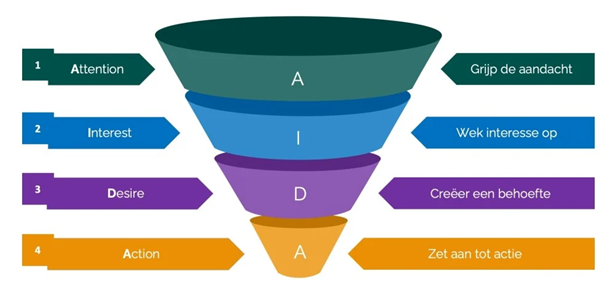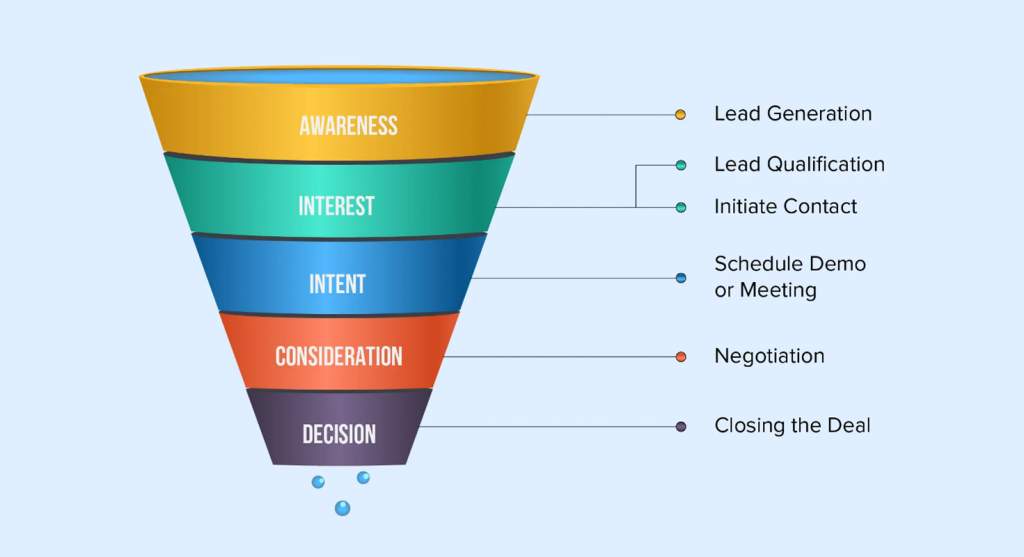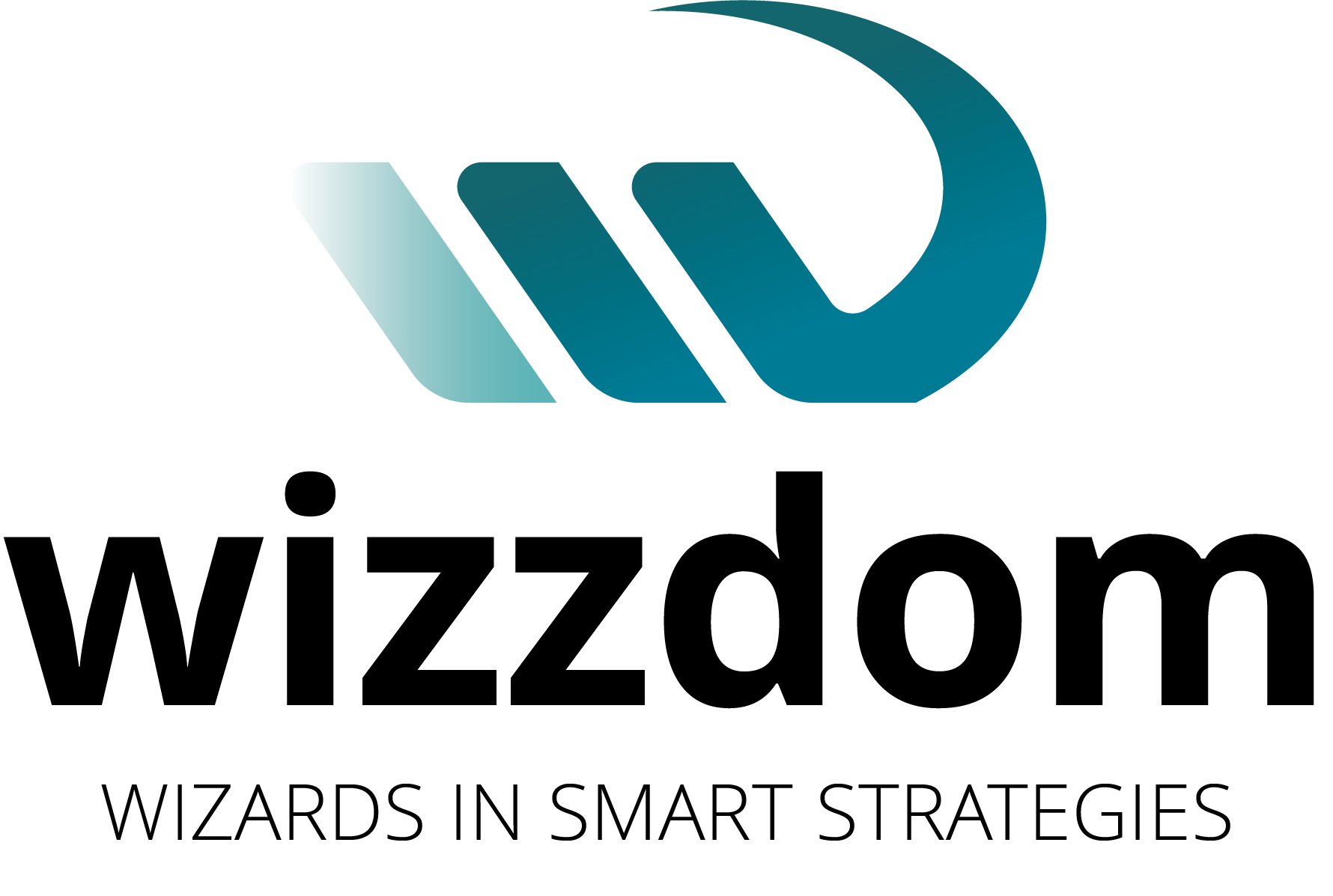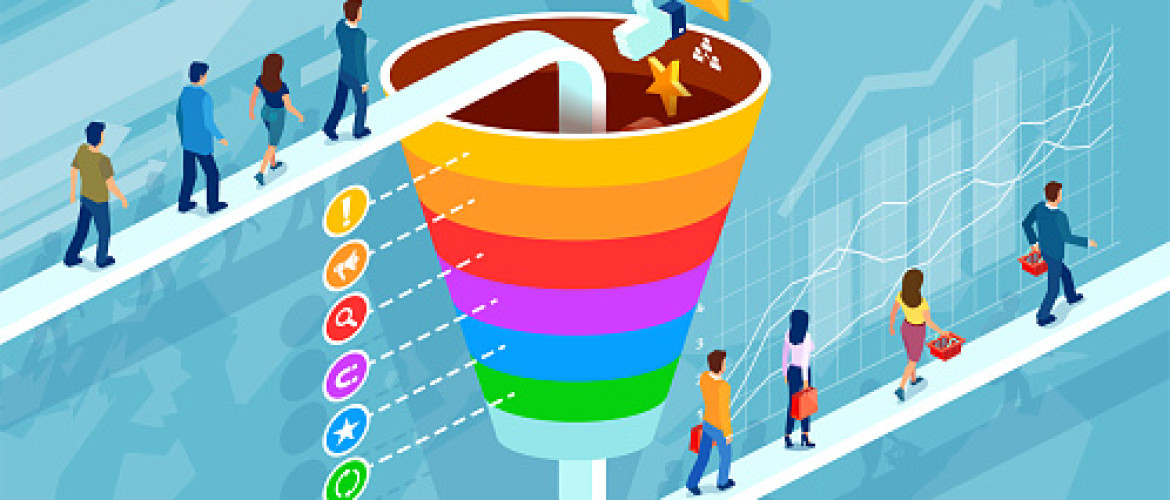In the world of sales and marketing, terms like “sales pipeline” and “sales funnel” are often used interchangeably, but they actually have different meanings and applications. In this blog post we take a closer look at the difference between a sales pipeline and a sales funnel, and give you tips on how to effectively implement these concepts in your organization.
To start, we should first take a moment to consider the definitions of sales funnel and sales pipeline.
Sales funnel:
A sales funnel is a visual representation of the process of converting potential customers into paying customers. The idea is that, like a funnel, there are many potential customers at the top (the leads) and as they move through the sales process, the group becomes smaller as some leads drop off and others convert to customers. You could say that the sales funnel is managed and edited by the marketing department of your company, but by extension it must live throughout your entire organization.
Every colleague and every department must be aware that they play an important role in the customer’s decision-making process, whether it is a new customer or an existing customer who is looking for a repeat purchase.
A typical sales funnel includes several stages that the consumer goes through before making a purchase. A well-known model in marketing is the AIDA model.
AIDA is a marketing model that describes four steps that must occur in an advertisement. The four steps map out the consumer’s decision-making process before the actual purchase or use of a product or service takes place. AIDA stands for the abbreviation: Attention, Interest, Desire, Action.
Awareness: The first step of the AIDA model starts with attention, or attracting the attention of the consumer. This is often the first time that your potential customer comes into contact with your products and/or services. The goal here is to make the consumer aware that the product exists. The most common method of attracting consumer attention is through mass communication. However, mass communication is not always the best method. More personal communication is often a lot more effective!
Interest: This second step of the AIDA model focuses more on the interests of the consumer. If the product does not match the right interest(s) of the consumer, the consumer may not be interested and drop out. So try to approach the right target group!
Leads show interest in your product or service, for example by visiting your website, requesting more information or following your social media accounts.
Desire: Sometimes also called the Consideration phase, the phase in which the consumer considers purchasing your product or service. Leads are seriously considering buying from you and may be comparing different options. This step of the AIDA model is desire, which concerns the desires of the consumer. The consumer is now aware of the existence of the product and considers it interesting. In step three, the consumer must become aware of the benefits of the product so that he can consider a purchase.
Action: The last step of the AIDA model is action and concerns the actual action of the consumer. The consumer is aware of the product and the associated benefits. All the consumer now has to do is make the purchase. The trigger for action is very broad. Everything can influence the purchase of the product, namely uncontrollable and controllable factors. An uncontrollable factor could, for example, be weather conditions. Controllable factors are of greater importance and concern factors such as shelf position, appearance of the product and stimulation of the experience of the product.

Sales Pipeline:
A sales pipeline is more focused on the individual steps a salesperson must take to close a deal. It represents the progress of each specific deal or customer and typically includes several phases that correspond to the progression of a sales conversation. Think of it more as a sales progress administration.
An example of a sales pipeline could be:
1. (Lead generation): Identifying and approaching potential customers.
2. Qualification (lead qualification & contact initiation): Determining whether a lead actually has a good chance of converting into a customer, based on criteria such as budget, needs, and willingness to buy.
3. Presentation (Demo or meeting): Presenting your product or service to the prospect and convincing them of its value.
4. Negotiation (Negotiation): Negotiating price, terms and other details of the deal.
5. Closing: Finalizing the deal and converting the prospect into a customer

Implementation Step-by-step plan:
Now that we’ve discussed the difference between a sales pipeline and a sales funnel, let’s see how you can effectively implement these concepts in your organization:
Step 1: Analyze your current sales process:
Identify the different stages a prospect goes through, from first contact to final purchase. Also determine which steps are needed to close a deal and in what order they should take place.
Step 2: Design your sales funnel:
Create a visual representation of your sales funnel with the different phases that leads go through. Assign measurable objectives to each stage to measure the progress of leads through the funnel.
Step 3: Define your sales pipeline:
Identify the specific steps salespeople need to take to close a deal. Set clear criteria for each stage of the pipeline to determine when a deal can be moved to the next stage.
Step 4: Implement a CRM system:
Use a Customer Relationship Management (CRM) system to manage and track your sales funnel and pipeline. Ensure that salespeople add regular updates to the CRM system to track deal progress.
Step 5: Train your sales team:
Make sure your sales team is properly trained in using the sales funnel and pipeline. Educate them on the importance of accurately tracking leads and deals in the CRM system.
Step 6: Optimize and Analyze:
Regularly monitor the performance of your sales funnel and pipeline. Identify areas where improvements can be made and experiment with different strategies to increase conversion rates.
By implementing an effective sales funnel and pipeline in your organization, you can gain better insight into the sales process, improve the performance of your sales team and ultimately close more deals. With a good understanding of the difference between a sales pipeline and a sales funnel, and by following the step-by-step plan above, you can successfully integrate these concepts into your sales strategy.
Would you like to know more about how to best coordinate a sales funnel and sales pipeline? Contact us and request a free strategy session here.






